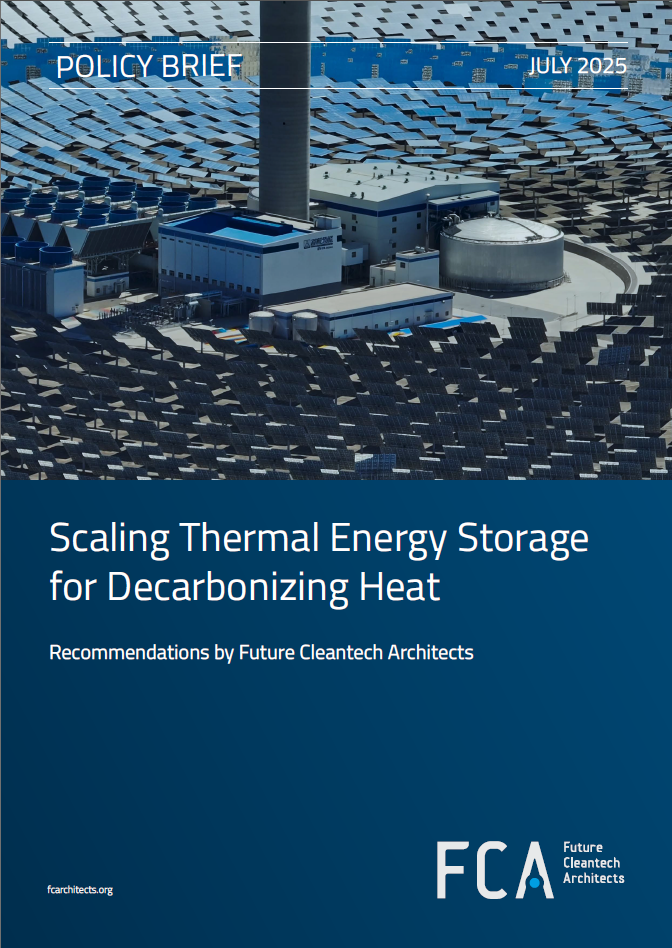Policy Brief on Scaling Thermal Energy Storage for Decarbonizing Heat
Policy Brief on Scaling Thermal Energy Storage for Decarbonizing Heat
Thermal Energy Storage (TES) is an overlooked yet critical enabler of Europe’s energy transition. TES delivers on the competitiveness, decarbonization, and security of the European Union (EU), by replacing imported fossil fuels with flexible, clean, and locally sourced heat.
Heat demand in industry and buildings accounts for half of the EU’s energy use and over a quarter of greenhouse gas emissions. TES enables clean, reliable, and flexible heat by storing heat made from low-cost electricity and waste heat.
Yet despite its readiness in many applications from low to high temperatures, TES remains underutilized. While the economic case for TES has recently improved, driven by the growing availability of low-cost renewable electricity, including frequent periods of surplus power.
TES can, to some degree, decouple energy supply from demand, making electrified heating both scalable and operationally more cost-effective, particularly when powered by cheap renewable electricity. While this opens new opportunities, confidence in long-term market trends and supportive policy is still necessary to justify upfront investments in this technology.
Despite the commercial readiness of technologies for low and medium temperatures, where 80% of the heat is utilized, insights from ten of the US and Europe’s most advanced TES startups highlight several gaps in current policy frameworks. Their input is also reflected across the recommendations in this brief.
Policy Recommendations
Deploying thermal energy storage could reduce renewable curtailment by more than half, lower peak heat prices, and lower total energy system costs, saving several billion euros per year.
Thermal energy storage can replace up to 1,800 TWh of fossil fuels annually in industry and cut over 500 MtCO₂e in emissions, strengthening investment signals and reducing reliance on fossil flexibility assets.
Scaling thermal energy storage could support new and repurposed jobs across the value chain and enable Europe to lead not only in climate tech research and transform such research into globally competitive start-ups and scale-ups.
Low-carbon sources and technologies like heat pumps, solar thermal, and geothermal are scalable and costeffective for nearly 80% of heat demand, which is below 500ºC, including 60% under 100ºC.
An EU-wide strategy aligning decarbonization and funding priorities would help scale up support for TES, which currently accounts for less than 0.5% of Innovation Fund investments and around 3% of the climate-related funding of the European Innovation Council (EIC).
